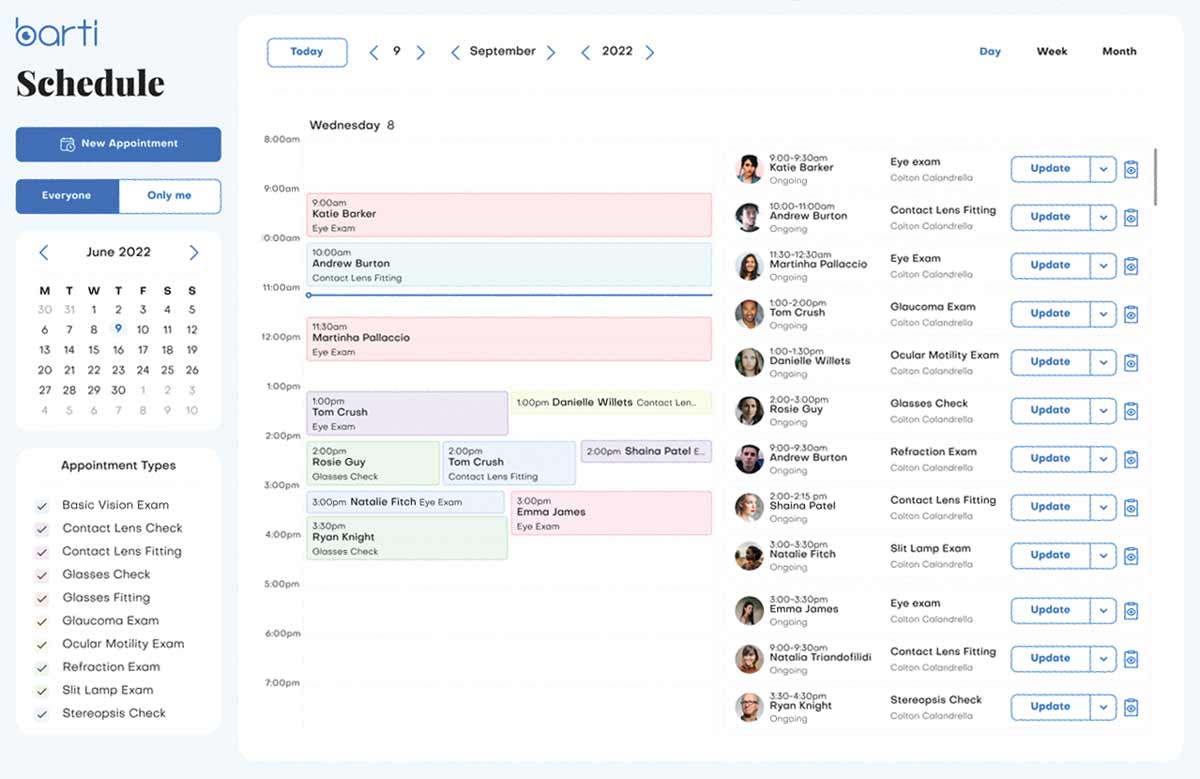 |
It’s hard to keep up with all the new eyecare products available today. This month, I’ll point out some lesser-known innovations that help improve treatment outcomes and improve disease diagnosis. Let’s dive in.
Eidon Ultra-Widefield Module
This non-mydriatic camera from iCare provides an impressive high-definition, true-to-life color, 200° image of the retina. Using confocal microscopy technology, it detects small details of the optic nerve, macula and peripheral retina, as well as pathologies that are not easily visible with other instruments.
Neurolens
Some estimates find that over 100 million Americans suffer from asthenopia. A sizable number of them could benefit from prism use in spectacles, but this option is not as commonly used as presbyopia correction or other spectacle enhancements like photochromic lenses and blue-blocking filters. However, prismatic need is greater at near than far for over 95% of the population, so uniform prism doesn’t suffice.
Neurolens technology measures a patient’s complete ocular alignment system, including distance and near phorias, vertical and horizontal, and even AC/A (accommodative convergence to accommodative ratio) to name a few, in less than two minutes. I have found it provides far greater accuracy than subjective measurements such as a phoropter or prism bar, and yields the exact recommended prism correction and direction. When the lenses are ordered, the prismatic need at near is increased from distance and this solves eyestrain, headaches, neck stiffness, dizziness and dry eye sensation symptoms.
Barti
It’s about time an EHR company specifically organized for optometry emerged. The average entry in a primary eye exam electronic record is about 130 or more clicks, because most EHRs were designed for ophthalmology practices and either modified to work for optometry, or were simply used within the limitations they had. A company called Barti has found a way to decrease manual entry and eliminate the need for five or more other software packages that don’t communicate. It’s the easiest EHR you’ll ever use, giving you more time for face-to-face interaction with your patients.
 |
|
The Barti EHR is configured expressly for optometric practice and requires fewer clicks than systems originally designed for ophthalmology offices. Click image to enlarge. |
Acthar Gel
This relatively unknown medication from Mallinckrodt has been nothing short of miraculous in patients with keratitis and uveitis that are treatment-resistant. While ODs in most states can prescribe this agent through Mallinckrodt, a home health nurse works with the patient to administer and train the subcutaneous injection. Patients are typically dosed 80 units twice a week for three months, followed by 40 units twice a week for one month for non-infectious keratitis and anterior uveitis.
I use it when dealing with what I call the four R’s: those resistant to treatment, rebounders, steroid responders and patients with reimbursement issues related to other medications.
OcuSoft Lid Scrub Allergy
This eyelid allergy cleanser contains green tea extract (which reduces inflammation), tea tree oil (which reduces itching) and PSG-2, a water binding agent that reduces redness. These attributes, combined with the simple act of gently removing allergens on the eyelids and ocular adnexa, show great benefit for allergy sufferers.
Dry Eye Drink
Studies have shown that increased hydration can positively affect dry eye patients, but many don’t drink sufficient water. This flavorful, fully natural drink from Bruder Healthcare allows water absorption levels to double. The combination of turmeric, DHA, taurine and green tea, as well as natural electrolytes, focuses on hydration and decreasing inflammation.
Impressive InnovationsRead about more new eyecare products here in the second column of this two-part series by Dr. Karpecki. |
More to Come
The list of interesting products goes far beyond this one page, and next month I’ll continue sharing the latest and greatest treatments and instruments making an impact in the optometry world (see sidebar to the right).
Dr. Karpecki is medical director for Keplr Vision and the Dry Eye Institutes of Kentucky and Indiana. He is the Chief Clinical Editor for Review of Optometry and chair of the New Technologies & Treatments conferences. A fixture in optometric clinical education, he consults for a wide array of ophthalmic clients, including ones discussed in this article. Dr. Karpecki's full list of disclosures can be found here.
